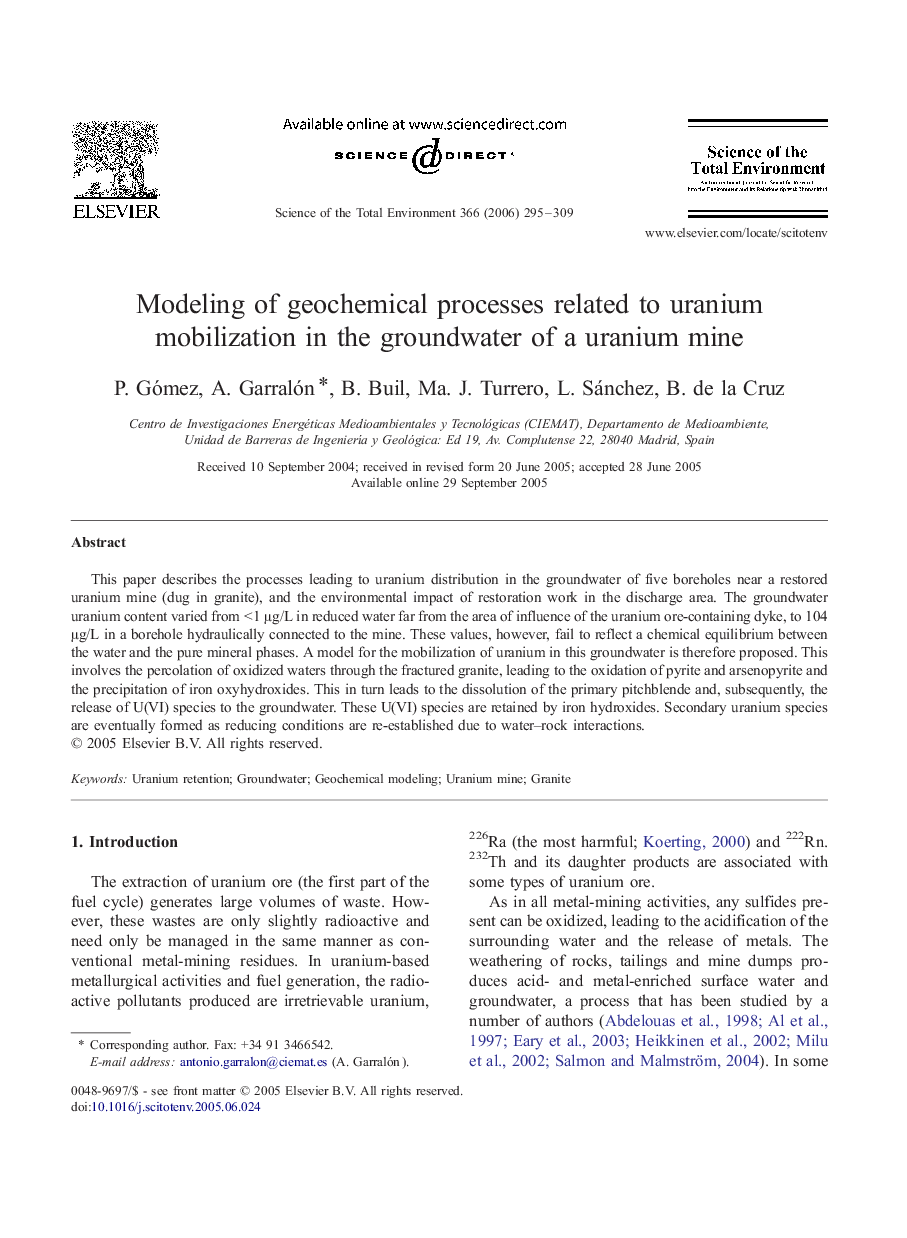| Article ID | Journal | Published Year | Pages | File Type |
|---|---|---|---|---|
| 4434244 | Science of The Total Environment | 2006 | 15 Pages |
This paper describes the processes leading to uranium distribution in the groundwater of five boreholes near a restored uranium mine (dug in granite), and the environmental impact of restoration work in the discharge area. The groundwater uranium content varied from < 1 μg/L in reduced water far from the area of influence of the uranium ore-containing dyke, to 104 μg/L in a borehole hydraulically connected to the mine. These values, however, fail to reflect a chemical equilibrium between the water and the pure mineral phases. A model for the mobilization of uranium in this groundwater is therefore proposed. This involves the percolation of oxidized waters through the fractured granite, leading to the oxidation of pyrite and arsenopyrite and the precipitation of iron oxyhydroxides. This in turn leads to the dissolution of the primary pitchblende and, subsequently, the release of U(VI) species to the groundwater. These U(VI) species are retained by iron hydroxides. Secondary uranium species are eventually formed as reducing conditions are re-established due to water–rock interactions.
